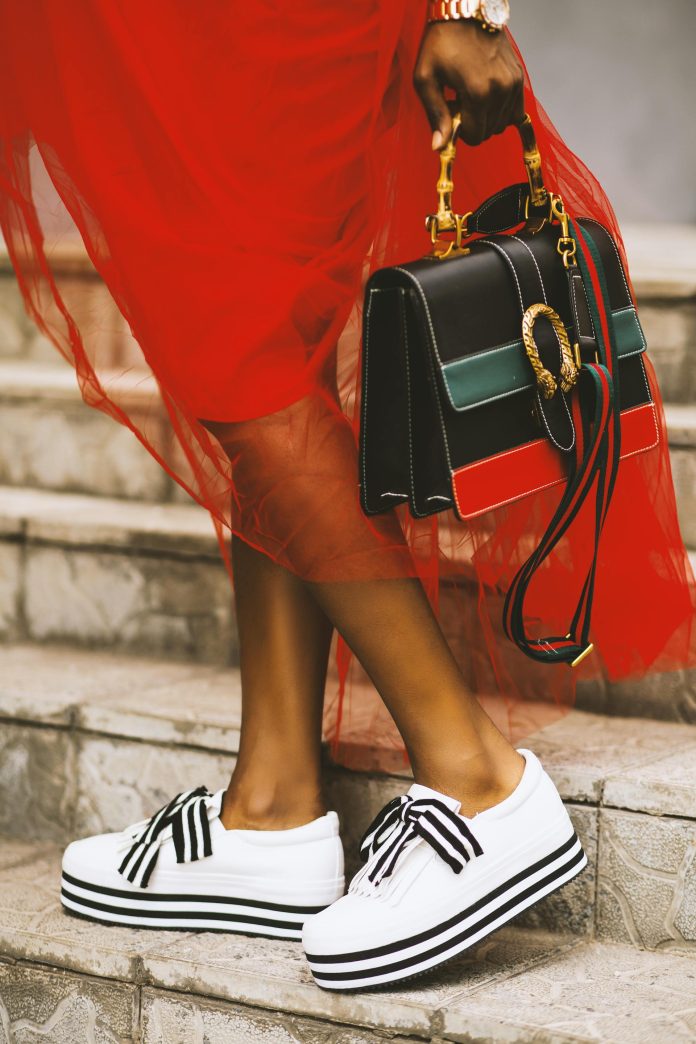Luxury fashion houses are often seen as the trendsetters and are admired for their fashion looks. While they serve as fashion stars, recent controversy and discussions around whether luxury brands are stealing cultural work and not giving pepper credits is coming to limelight. The recent controversy of popular luxury fashion house Prada has landed itself into a pitfall after launching a pair of leather sandals that are similar to India’s iconic Kolhapuri chappals. Although these Kolhapuri footwear that we would get at our local markets in India between the range of Rs. 250- 500 are now sold for a jaw-dropping price of ₹85,000. This created a buzz amongst Indian citizens that they took over social media calling out the brand and sparking a debate on cultural theft and exploitation.
Although this isn’t the first time that global brands have been accused of borrowing or stealing from cultures. There are many brands that profit from cultures without giving them the due credit or fair compensation.
The Prada Kolhapuri Chappal Controversy

Recently, Prada sparked outrage in India after releasing a sandal strikingly similar to Kolhapuri chappals, a handcrafted footwear tradition rooted in Maharashtra. The catch? Prada’s version came with a designer label and a hefty ₹90,000+ price tag—a staggering leap from the humble, locally made originals often sold for less than ₹1,000.
The sandals in question were part of Prada’s Spring/Summer 2026 menswear collection and were initially described simply as “leather sandals” in the show notes. However, the design’s strong resemblance to Kolhapuri Chappals, a centuries-old craft from Maharashtra and Karnataka, led to accusations of cultural appropriation and a lack of respect for the artisan community.
There was no mention of Indian craftsmanship, no nod to the artisans who’ve been making these for generations. Social media users slammed the brand for turning a traditional, culturally rich item into a luxury accessory—without any context or credit.
Actor Kareena Kapoor Khan too took to Instagram Stories to take a dig at the ongoing controversy. She posted a picture from her vacation, which shows her feet propped up on a sun lounger, wearing a pair of traditional Kolhapuri chappals with a metallic silver finish. Through the image, she came forward to support the artisans associated with the traditional art form in India. Kareena added a witty caption to the image that read, “Sorry not Prada…(laughing and punching emoji) but my OG kolapuri (Heart emoji)️.”
With this, she took a dig at luxury brand Prada, proudly flaunting her original Kolhapuri sandals instead of opting for high-end designer footwear.
Although after significant backlash and much outrage on social media, Prada finally acknowledged that their leather sandals were “inspired by the Indian handcrafted footwear from the Maharashtra and Karnataka region”.
This Isn’t the First Time—And It Won’t Be the Last
Not even a month after the Prada controversy, another luxury brand Dior comes under fire for no credit to India in USD 200,000 Mukaish Overcoat (A centuries old metal thread embroidery technique originating from Lucknow. A $200,000 (₹1.6+ crore) overcoat from the Paris Fashion Runway has come under scrutiny after fashion commentator and content creator Hanan Besnovic took to Instagram to share a post made a video of a particular gold and ivory coat with a houndstooth design. He accompanied his post with the caption, “34 days to create a 200k Dior coat? Well here is a little more context to Dior’s 200k coat!” He revealed that the coat was meticulously hand‑embroidered by 12 Indian artisans over 34 days. Yet Dior failed to credit either the cultural root or the hands that brought the piece to life.
The backlash has been swift: critics argue that pouring ₹1.6 crore into a garment while artisans potentially receive only a few hundred dollars is not just ethically dubious, it’s a glaring display of cultural appropriation. Unlike past Dior collections curated by Maria Grazia Chiuri, which acknowledged Indian crafts and collaborators, Jonathan Anderson’s debut felt “tone‑deaf” in its omission. It reignited broader industry concerns about luxury labels exploiting ethnic art forms for profit without transparency, recognition, or respect.
Top fashion brands slammed for cultural theft:
1. Isabel Marant and the Mexican Tlahuitoltepec Blouse– French designer Isabel Marant faced massive backlash in 2015 for selling embroidered blouses strikingly similar to the traditional attire of Mexico’s Mixe community from Santa Maria Tlahuitoltepec. Locals accused the brand of copying their huipil designs, which hold deep cultural and historical significance.
2. Dior’s Controversial Saddle with Native American Vibes– In 2017, Dior featured Native American-inspired designs in their collection, with imagery and aesthetics echoing indigenous patterns. The campaign, starring Jennifer Lawrence, faced sharp criticism for using tribal influences without consulting or collaborating with Native communities.
3. Gucci’s Turban Drama– In 2018, Gucci stirred outrage after showcasing a “Indy Full Turban” resembling the Sikh Dastar at a fashion show, priced at $800. Members of the Sikh community condemned the move, arguing that turning a sacred religious symbol into a fashion accessory was deeply disrespectful.
4. Zara’s Embroidery Scandal – In 2021, the Mexican government formally accused Zara of using designs specific to the Mixtec and Zapotec cultures in its garments without permission or credit. The patterns, rich in symbolism and cultural meaning, were reduced to mere design elements on mass-produced tops. This wasn’t the first time Zara was caught in such a storm; the brand had also faced criticism for selling products that resembled Ukrainian vyshyvanka blouses, again without acknowledging their heritage.
5. Louis Vuitton’s Yoga Mat Irony – Louis Vuitton found itself in hot water for a bizarrely tone-deaf product launch of a $2,390 “Gandhi-inspired” yoga mat. Crafted in leather (ironically, considering Gandhi’s strict vegetarian beliefs), the mat was marketed as a lifestyle accessory, with no regard for the values the Indian freedom fighter stood for: simplicity, anti-materialism, and spiritual discipline.
The mat was part of a travel collection and was widely criticized for misappropriating Gandhi’s image to sell ultra-luxury goods to the global elite. Many pointed out the glaring contradiction—using a man who symbolized resistance to Western consumerism to promote a hyper-consumerist product.
Why Cultural Theft in Fashion Is So Problematic?
What makes cultural theft so problematic isn’t just the imitation—it’s the erasure and exploitation that comes with it. Big fashion brands often charge exorbitant prices, while the original communities that inspired the designs remain underpaid, unacknowledged, and unheard.
Many artisans lack the global platforms and marketing budgets to protect or promote their work. Meanwhile, large corporations profit by copying their designs and passing them off as “original reinterpretations”, while ignoring cultural theft issues.
The internet doesn’t let these offenses slide anymore. Memes flood Instagram and X (formerly Twitter) whenever a luxury brand commits another act of cultural theft. A recurring joke: “Take local culture, add a logo, multiply the price by 100, call it haute couture.”
Online, people sarcastically suggest launching a ₹1 lakh “lungi collection” or ₹50K “desi gamcha tote bag,” mocking how easily brands repackage cultural identity into luxury without context or conscience.
In the name of fashion brands are looting people, we all know about the famous Indian Jute Bag or fondly called Vimal bag. These bags are now being sold online in foreign countries as Indian Souvenir bags. Typically known as an Indian jhola, this bag that we get at our local kinara (grocery) store is now being sold for $48 that costs to approximately ₹4,000.
One Indian user took over to Twitter talking about the bag and how popular stores are scamming people like the famous US Nordstrom store that has being selling it for $48.
Is This Who We Look Up To?
Luxury fashion is often seen as aspirational. But when the aspiration comes at the cost of erasing cultures, exploiting artisans, and glorifying theft, it’s time to question our heroes.
Should we continue to idolize these brands just because they’re big names? Or should we support local creators, ethical designers, and homegrown brands that understand and respect the roots of what they create?
There’s a thin line between inspiration and appropriation. Celebrating a culture means collaborating, crediting, and compensating. Copying, on the other hand, strips away meaning and profits from power imbalance.
Until luxury fashion begins to value authenticity over aesthetics and people over profit, this pattern will keep repeating.
As the world progresses it is high time that if global fashion brands want to stay relevant and respected, they must do more than just “borrow” traditions. They need to honor them—with credit, compensation, and collaboration.






























